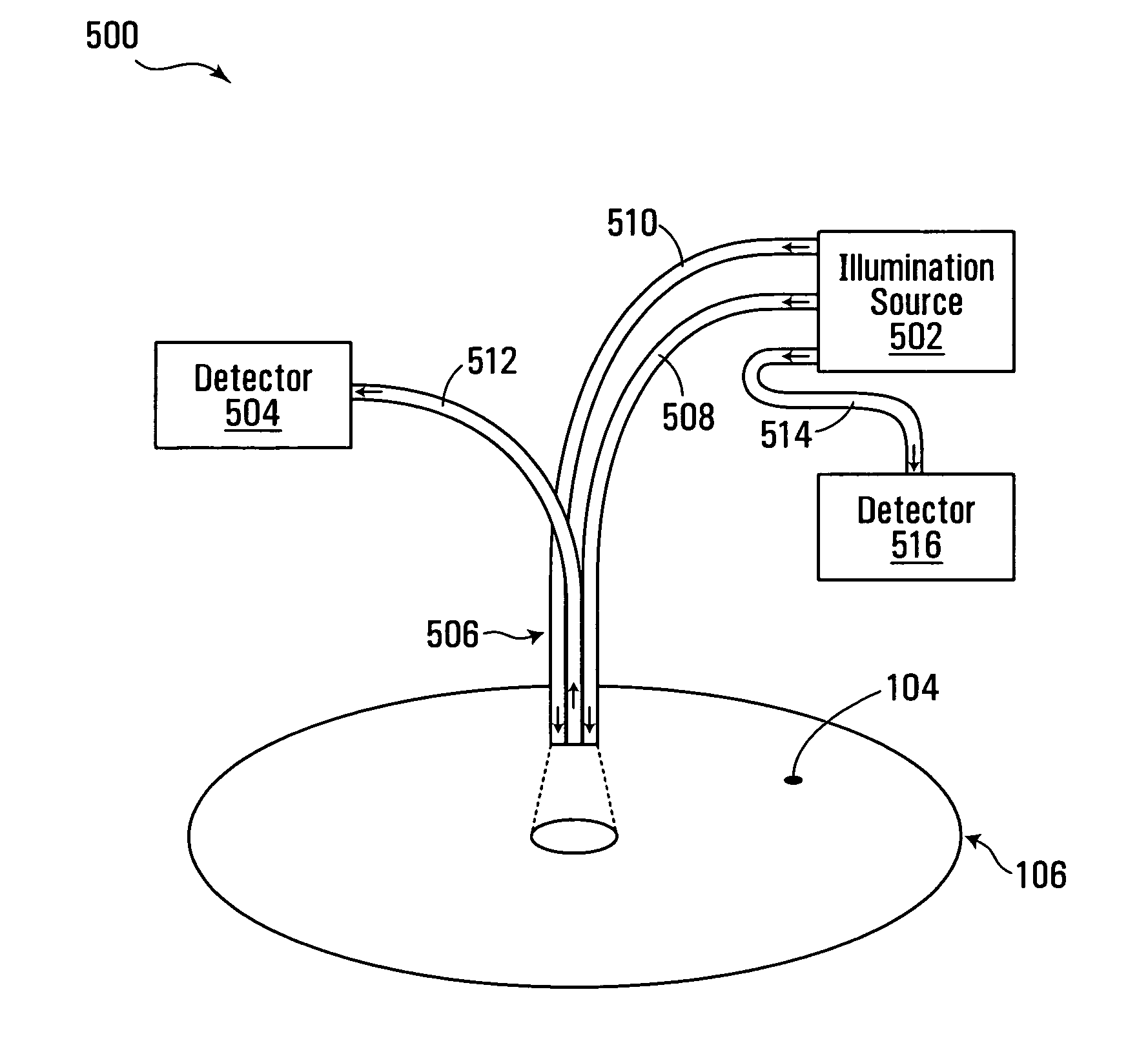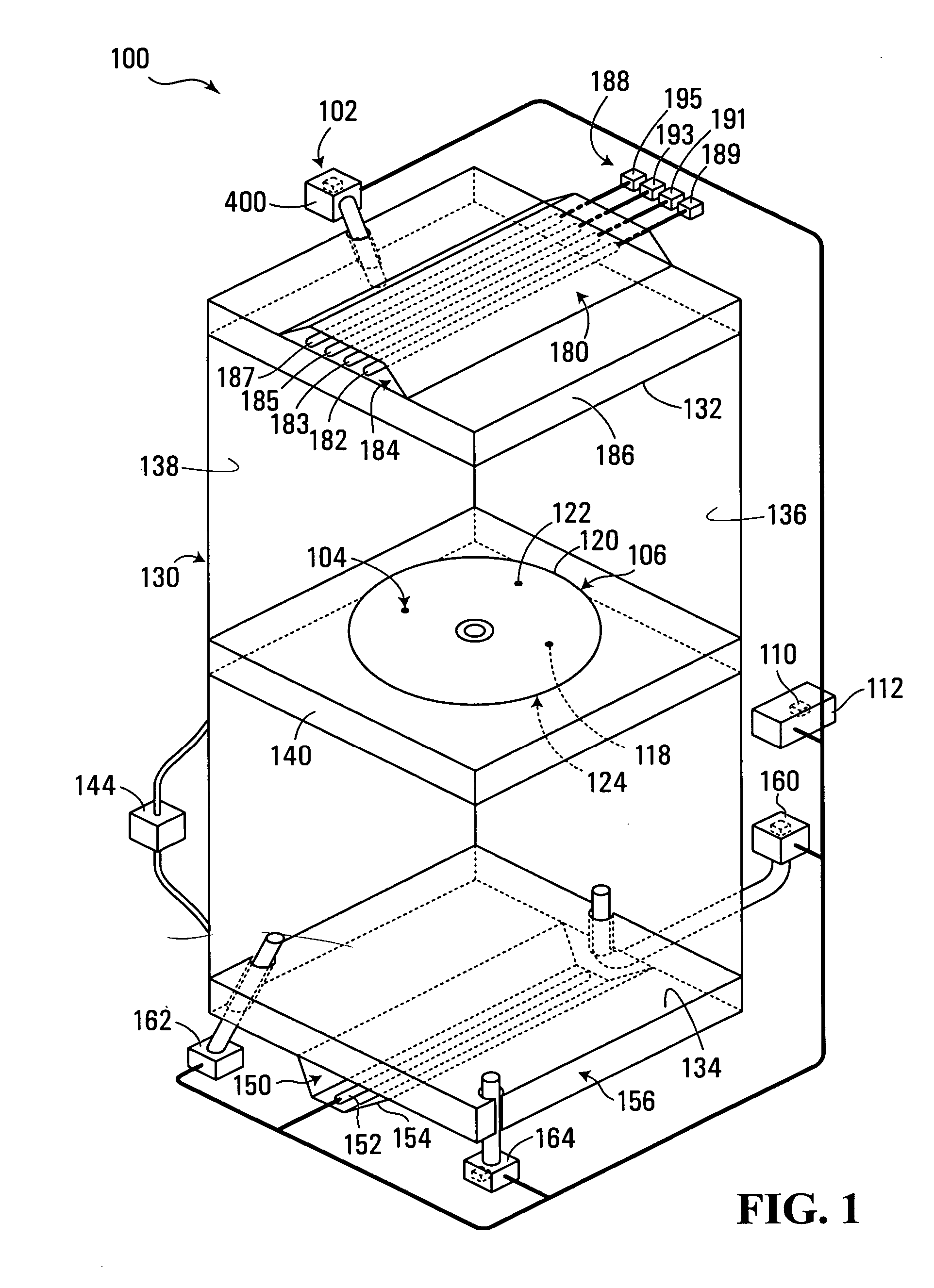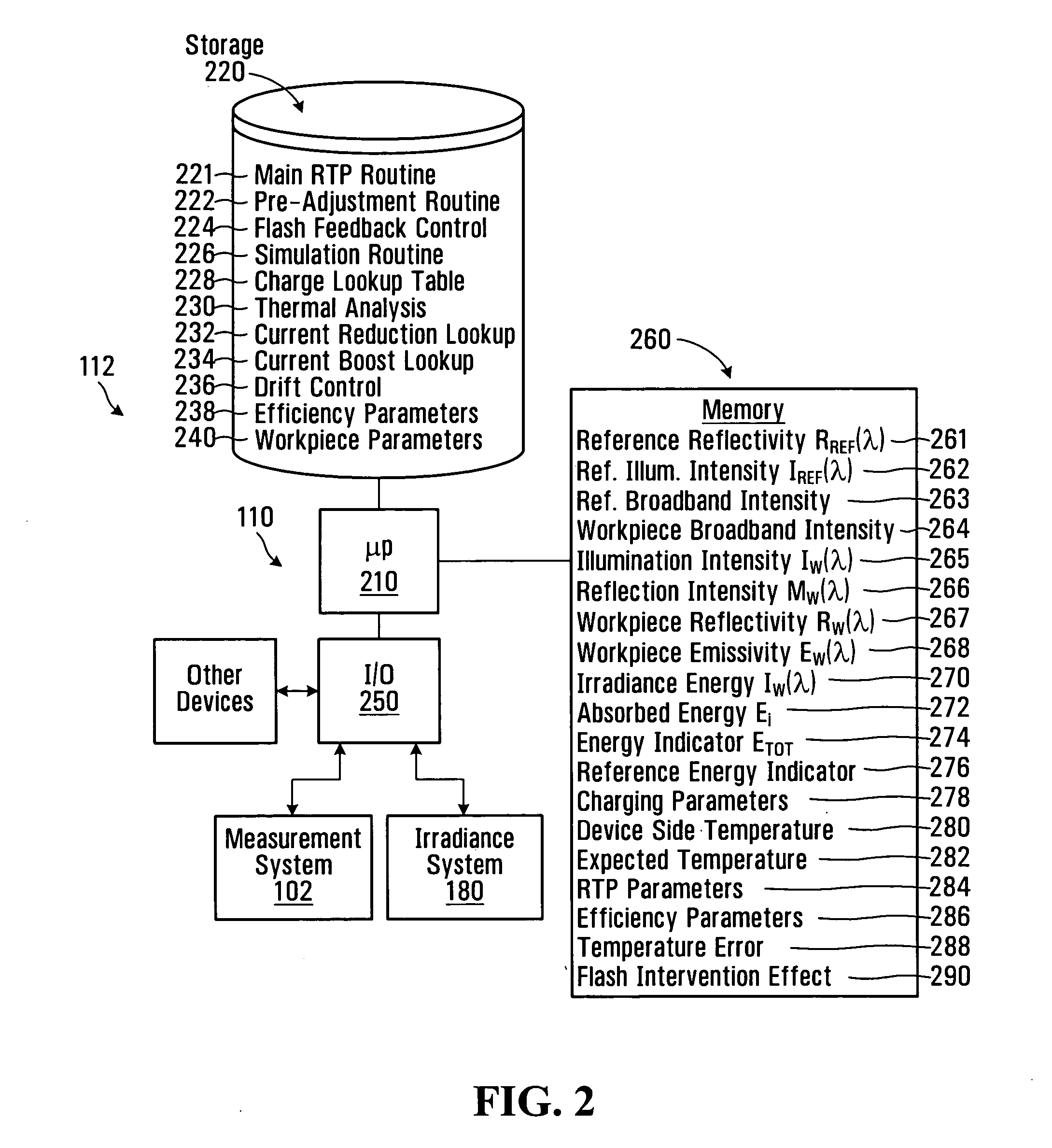Repeatable heat-treating methods and apparatus
a heat-treating method and heat-treating technology, applied in the field of heat-treating, can solve problems such as the inability to reduce the efficiency of the system, and achieve the effect of minimizing the variation of performance from wafer to wafer
- Summary
- Abstract
- Description
- Claims
- Application Information
AI Technical Summary
Benefits of technology
Problems solved by technology
Method used
Image
Examples
Embodiment Construction
[0080]Referring to FIG. 1, a rapid thermal processing (RTP) system according to a first embodiment of the invention is shown generally at 100. In this embodiment, the system 100 includes an irradiance system 180 configured to produce an irradiance flash incident on a surface 104 of a workpiece 106, a measurement system 102, and a processor circuit 110 in communication with the measurement system 102 and with the irradiance system 180. In the present embodiment, the measurement system 102 is configured to monitor at least one thermal efficiency parameter of the irradiance system 180, and the processor circuit 110 is configured to automatically update control information used by the irradiance system 180 to produce the irradiance flash, in response to the monitoring of the thermal efficiency parameter.
[0081]In this embodiment, the measurement system 102 is also configured to measure a temperature of the surface 104 of the workpiece 106 during an initial portion of the irradiance flash...
PUM
 Login to View More
Login to View More Abstract
Description
Claims
Application Information
 Login to View More
Login to View More - R&D
- Intellectual Property
- Life Sciences
- Materials
- Tech Scout
- Unparalleled Data Quality
- Higher Quality Content
- 60% Fewer Hallucinations
Browse by: Latest US Patents, China's latest patents, Technical Efficacy Thesaurus, Application Domain, Technology Topic, Popular Technical Reports.
© 2025 PatSnap. All rights reserved.Legal|Privacy policy|Modern Slavery Act Transparency Statement|Sitemap|About US| Contact US: help@patsnap.com



